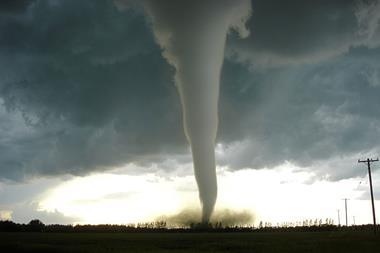Recent nat cats haven’t altered historic lows in property rates so what will it take to harden the insurance market?
Prices for commercial property and business interruption cover remain at historic lows despite a spate of large natural catastrophes, according to a study. This just begs the question: What will it take to harden the market?
The Airmic/Advisen benchmark report found that rates remained mostly static across the board, with slightly more falls than increases. There is unlikely to be a leap in prices anytime soon, commented Willis, who sponsored the study.
“This is the eighth year of benign conditions for buyers in this class of business, and one has to ask whether it can accurately be described as a soft market any more or whether it has perhaps become the ‘new normal’,” said Airmic technical director Paul Hopkin.
“The fact that even the recent spate of large natural and other catastrophes could not budge rates upwards suggests that they are likely to remain depressed for a while yet.”
So what will it take to harden the insurance market?
Paul Maynard, chief placement officer at Willis said that “abundant capacity should ensure that premiums remain competitive for property and casualty business” until at least 2012.
The last time the insurance market saw a dramatic hardening was 2001. Years of under pricing of risks by insurers led to a dramatic upswing in price—the final catalyst of which was the horrific terrorist attack on New York in September, 2001.
Some insurers say similar pressures are building in the market now. They point to deteriorating combined ratios (one of the best measures of insurer profitability), weakening reserves and rising claims. And rates in some lines are beginning to creep up, most notably fleet rates.
“Even with the excess capacity in the market there is an inevitability that a market hardening is on the way - the only question is the balance between timing and extent,” one insurance CEO told StrategicRISK recently.
There are several things that have the potential to cause the insurance market to harden. A major catastrophe on the scale of September 11 could do it. But neither the financial crisis nor any of the recent major catastrophe events—such as the Japanese earthquake/tsunami or the Australian/New Zealand floods—have done this.
If some event caused capital to flood out of the insurance market that could reduce competition and allow insurers to raise their prices. Some commentators suggest that the exodus of capital could be brought on by interest rates rising—making the capital markets a more attractive (and less risky) place to invest—or a major new peace of regulation, like Solvency II.
In reality it is likely to be a combination of two or more of these events that eventually puts a stop to the soft market and spurs an uptick in price.
It seems dreamy to expect the soft market to continue forever. There are several things risk managers can do to improve their risk profile to make sure they are prepared when the market eventually does turn, not least investing in risk mitigation and engaging with their insurers early on.
What seems a fairer guess is that whatever hardening does occur it won’t be as bad as 2001. Famous last words!



















